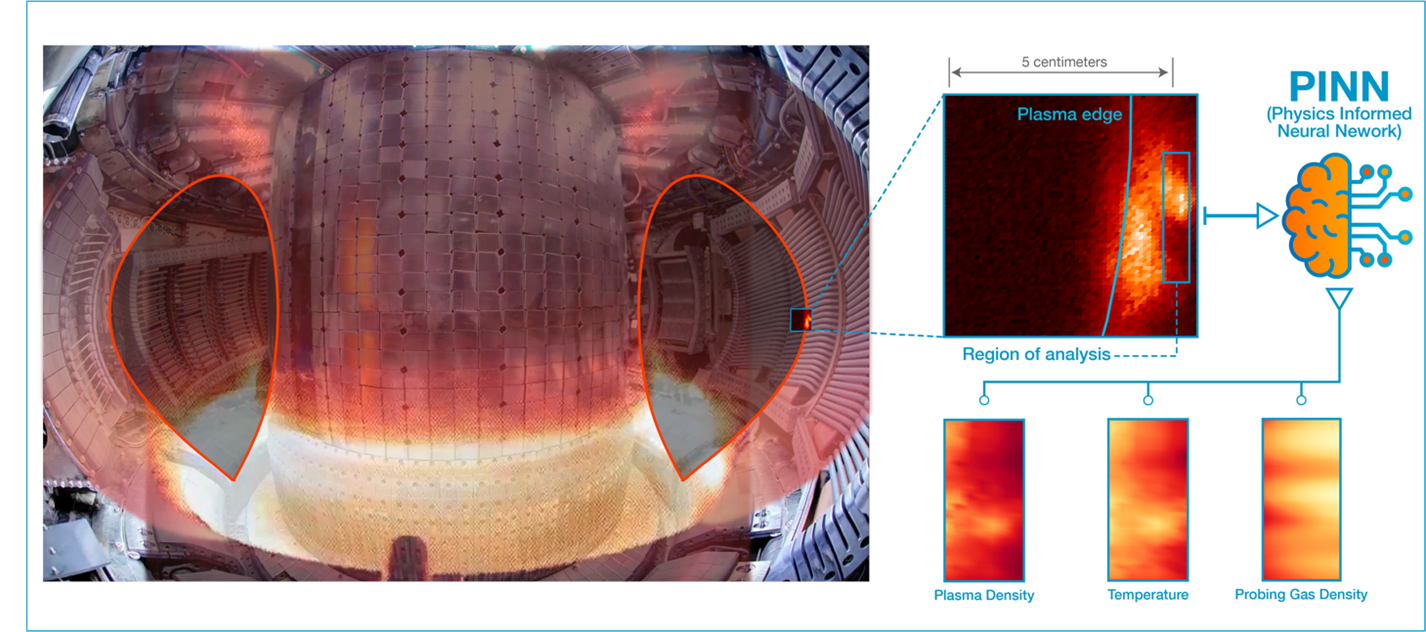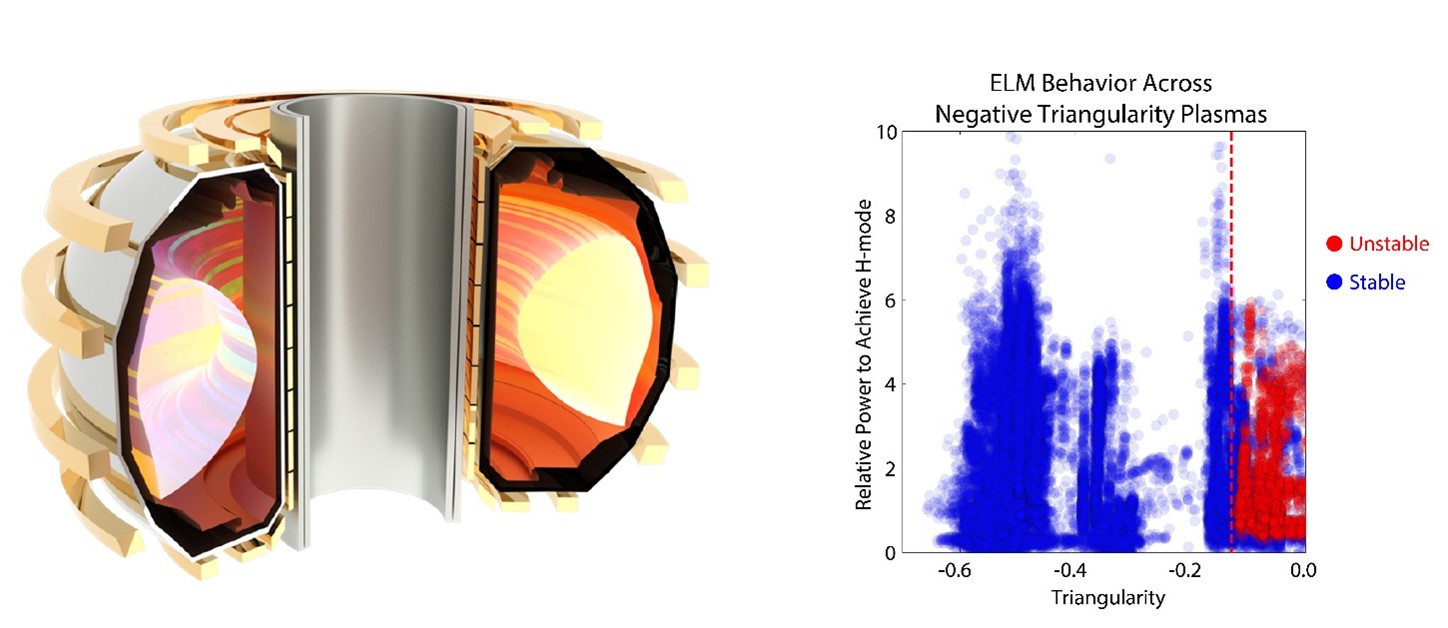Bridging Theory and Fusion Experiments through Physics-Informed Deep Learning
Neural networks guided by physics are creating new ways to observe the complexities of plasmas.

The Science
Fusion experiments take place under extreme conditions, with extremely high temperature matter contained in specialized vacuum chambers. These conditions limit the ability of diagnostic tools to collect data on fusion plasmas. In addition, computer models of plasmas are very complex and have difficulty characterizing turbulent plasmas. This makes it difficult to compare models against measurements from experimental fusion devices. In response, researchers have demonstrated a novel way to bridge plasma modelling and experiments. Using pictures from cameras routinely installed in fusion devices with an optical filter, the researchers developed a technique to infer electron density and temperature fluctuations. Fusion scientists can use this information in experiments to predict plasma fields in a manner consistent with theory.The Impact
Predictive modelling of plasma turbulence in fusion experiments is challenging. This is due to the difficulty in modeling the conditions at the boundaries of these chaotic systems. Using a custom physics-informed approach to machine learning, researchers developed a framework able to directly solve for plasma properties that are usually not resolved in the boundary of experimental fusion devices. This allows scientists to predict how plasma fluctuations behave in experiments. It also allows them to test predictive models in ways consistent with theory. This sort of turbulence modelling was not previously practical.Summary
Adequate confinement of fusion plasmas is essential to reaching the goal of net fusion energy production. A key component in predicting confinement is understanding the ways plasma instabilities can cause cooling and loss of performance within the fusion device. Accordingly, the fusion community spent decades improving experiments’ measurement capabilities to refine predictive models. However, the extreme temperatures and vacuum conditions needed for fusion make it very difficult to deploy diagnostics within fusion devices. Researchers from the Massachusetts Institute of Technology recently published two papers addressing this challenge.In the first paper, the researchers demonstrated how photon counts collected by commonly applied fast cameras can be converted into electron density and temperature fluctuations on turbulent scales using a novel, physics-informed AI framework that combines experimental data with radiative modelling and kinetic theory. The results are novel, experimental insights into previously unobserved plasma dynamics.
In the second paper, the team used this dynamical information about the electrons in conjunction with a widely used plasma turbulence theory to predict electric field fluctuations directly consistent with partial differential equations in an experimental setting. This work goes beyond conventional numerical methods and instead uses specially created physics-informed neural network architectures to develop a new kind of modelling for the nonlinear properties of plasmas. The work opens novel scientific paths to understanding whether theoretical predictions match observations.
Contact
Abhilash MathewsVow
mathewsabhilash@gmail.com
Funding
Funding support came from the Natural Sciences and Engineering Research Council of Canada through the doctoral postgraduate scholarship, the Department of Energy Office of Science, Fusion Energy Sciences program, a Joseph P. Kearney Fellowship, and a Manson Benedict Fellowship from the Massachusetts Institute of Technology Department of Nuclear Science and Engineering.Publications
Mathews, A., et al., Deep modelling of plasma and neutral fluctuations from gas puff turbulence imaging. Review of Scientific Instruments 93, 6 (2022). [DOI: 10.1063/5.0088216]Mathews, A., et al., Deep electric field predictions by drift-reduced Braginskii theory with plasma-neutral interactions based upon experimental images of boundary turbulence. Physical Review Letters 129, 235002 (2022). [DOI: 10.1103/PhysRevLett.129.235002]
Highlight Categories
Program: FES
Performer: University , DOE Laboratory
Additional: International Collaboration



